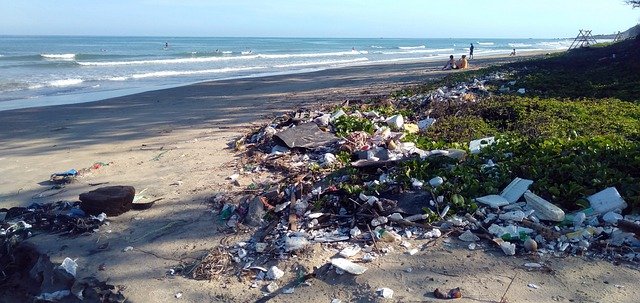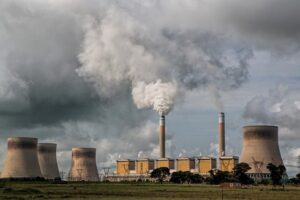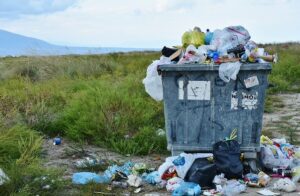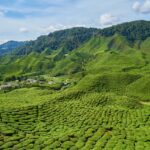
This post will explore some of the examples of negative Human-Environment Interaction. We will also explore some of the ways these can be reversed.
Although this post will cover the negative examples, we have a post that also covers the Positive Human Environment Interaction Examples as well as all examples at Human Environment Interaction Examples.
Table of Contents
- Human-Environment Interaction Definition
- Negative Human-Environment Interaction Examples
- More Examples of Negative Human-Environment Interaction
Human-Environment Interaction Definition
The definition of Human-Environment Interaction is the way humans interact with their surroundings or ecosystem.
It’s the way human beings interact with the earth and its environment and make changes to that environment. (Learn more at 3 Ways Humans Interact with the Environment).
At the same time, the environment can have an impact on humans. The environment can change what we eat, wear, build or do in everyday life. So, the environment impacts us and we impact the environment.
Human-Environment Interaction in a sentence, is the way that humans interact with and modify their environment.
Another definition might be, how humans adapt to their environment.
You can learn more about Human-Environment Interaction at Human Environment Interaction definition (in Geography).
Negative Human-Environment Interaction Examples
Following are some examples of negative human-environmental interactions. You can
Use of Natural Resources
Humans use natural resources for everyday life. Humans need food and water from the environment in order to survive.
Natural resources such as wood, metal, oil, diamonds, gold, and other resources are also used for human survival and advancement. Wood might be needed to build fires and cook food for example.
The problem is that humans can overuse resources, and some of those are non-renewable such as fossil fuels. Also, the use of resources such as oil leads to pollution and climate change. The mining of some minerals might destroy millions of acres of land in the extraction process and cause the leaking of toxins into areas nearby.
All of these are big negative impacts on the environment and the sustainability of the earth for future generations as well as having negative effects on the health of nearby people who are exposed to these practices.
Building and Expansion of Cities and Roads
The building of homes, cities and businesses sometimes requires the use of cutting down trees and altering the land and environment. This also creates spaces where animals and plants can no longer live.
This is especially true in bigger urban cities such as New York City where so much has been covered with cement, and barely any natural green space exists anymore. This is not only destructive to the environment and animals, but it also can take a mental toll. It’s been found that green spaces and water can have a positive impact on mental health.
Roads also run through natural habitats and can alter the environment and scare away or hurt animals. Also, the exhaust caused by cars traveling on these roads has a huge negative impact on the environment. Flying as well, in airplanes as a means of transportation, produces a lot of emissions.
Pollution

Cars and factories all create pollution and toxic chemicals that are harmful to our health and the environment and the ozone layer. One of the biggest causes of concern is carbon emissions.
Transportation contributes to a third of greenhouse emissions and is responsible for killing around 800,000 people per year.
Deforestation
The earth’s forests are being cut down at alarming rates. This is usually for buildings and industrial equipment, or the raising of livestock for animal food or products. This is one reason it helps to eat a Plant-Based Diet which lowers the demand for animal foods and minimizes the use of land for raising livestock.
This deforestation leads to the extinction of certain species of animals. Also, trees are useful in keeping the air clean and improving the health of the environment. The fewer trees left, the less they are able to improve the climate.
Deforestation also contributes to soil erosion. When trees are chopped down, the soil below is exposed and easily washed away by the rain.
Logging
Logging is the act of cutting down large amounts of trees for commercial use. This is usually because the wood is used for construction, producing paper, or other commercial items.
Logging needs to be practiced in a more sustainable way.
Drilling for Oil (Fracking)
Drilling for oil releases methane gases which contribute to climate change. Also, oil spills can happen and are massively disruptive to the environment, killing animals and wildlife.
Using up Water Resources
Accessible and clean water is running out and being used up. This clean water is also unevenly distributed throughout the planet. For example, if you look at the Human-Environment Interaction impact in Mexico, the water supply is something that is being affected.
This may be becoming a world water crisis.
Litter and Trash

Waste from trash, litter, and plastics can get into oceans and natural environments and harm animals.
Desertification
Desertification is the turning of green and fertile land into deserts and unfertile land. This is a problem because 2/3 of the world is becoming unfertile desert land by 2050.
Some of the main causes of desertification are logging, intense farming and overgrazing. Some natural disasters include drought and extreme weather, but even these could be linked to climate change from man-made causes.
Desertification can kill off plant and animal life. It creates less farm area to grow food and crops. And, it can also further cause extreme weather and climate change.
Governments have seen the problem and have vowed to step in and take action against desertification.
Boats
The increased use of boats on the water can have a negative impact on ocean life, even killing off some sea life and animals.
Illegal Hunting and Poaching
Illegal hunting and poaching, especially excessively and for sport, can contribute to the extinction of certain breeds of animals.
Overharvesting
Overharvesting is the use of natural resources at a rate that is faster than they can be renewed. Overfishing is an example of this.
Overfishing
Overfishing in the world’s oceans is becoming a problem, due to too much fishing and the removal of too many fish from their environment.
More Examples of Negative Human-Environment Interaction
The following video reiterates some of the examples we previously explored
Resources
Lance has been passionate about the plant-based diet and we have been following a whole food plant-based diet for over 5 years. We focus on health, natural healing, weight management, animal rights, and the health of the planet and environment by focusing on whole plant-based foods and sustainable practices.
Learn more at the About Me page and follow on social media at the links below.


